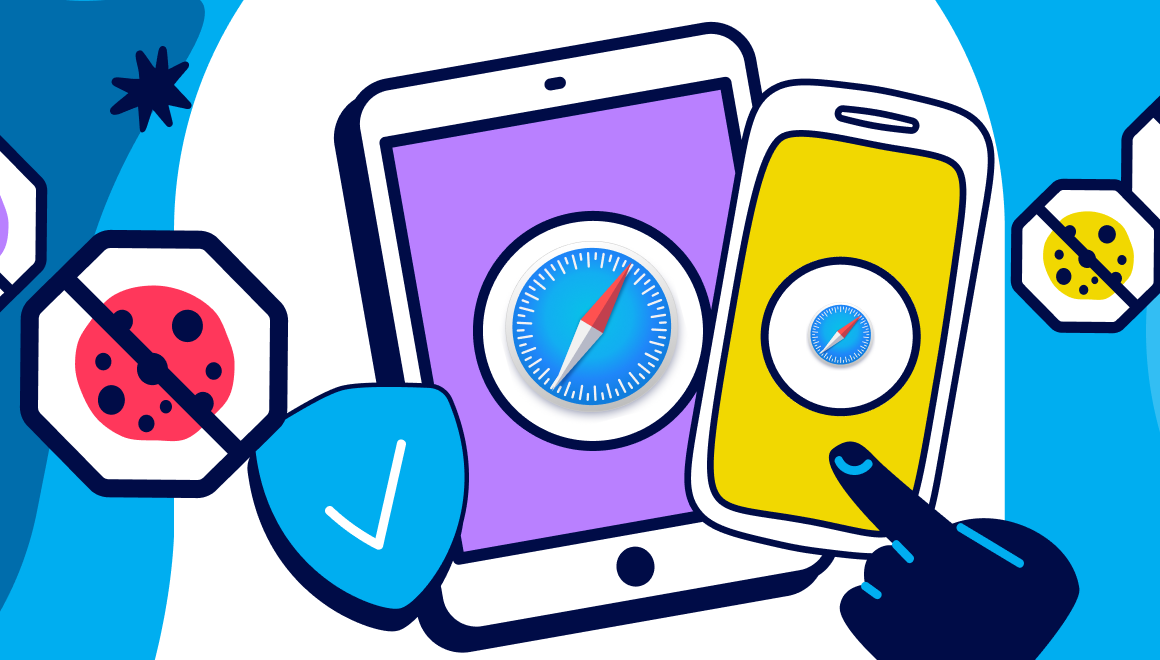Guide
How to Prepare for AI Spam
Key Points:
- AI-driven spam is a serious threat that can cause more harm than traditional spam tactics.
- Take proactive measures such as keeping our email software updated, leveraging advanced email filtering solutions, and regularly changing and strengthening our passwords.
- Enjoy a cleaner, faster, and more secure web experience with Ghostery Tracker & Ad Blocker extension, a free browser add-on that blocks ads, trackers, and pop-ups.

How to Prepare for AI Spam
Scammers constantly try to trick you with emails that claim to be from your human resources department or your bank with an important digital document.
However, spam emails are evolving with the advancement of artificial intelligence (AI), and they pose a new and serious threat to our online security and privacy.
AI-generated phishing emails have higher rates of being opened than manually crafted phishing emails, not to mention the rise of AI voice cloning.
We will explore how AI is changing the spam landscape, what are the risks and challenges of AI written spam, and how we can protect ourselves from this emerging cyberattack.
Understanding AI in Spam Emails
AI is a branch of computer science that aims to create machines or software that can perform tasks that normally require human intelligence, such as learning, reasoning, and decision making.
AI is being applied to various domains, such as healthcare, education, entertainment, and marketing. It can also be used for malicious purposes, such as:
- Deepfakes: Created using AI techniques to manipulate audio and visual content to appear authentic. They can be used in disinformation campaigns because they are difficult to differentiate from legitimate content.
- Spear-phishing attacks: Craft spear-phishing attacks, which are targeted attacks that use social engineering techniques to trick victims into revealing sensitive information.
- Cyberattacks: AI can be used to create computer viruses with automatic exploit generation capabilities.
- Misinformation campaigns: Generate misinformation that could destabilize society.
Why AI-Driven Spam is More Dangerous
AI-driven spam is a new type of spam that can learn and adapt to avoid detection and deceive users. It can generate diverse and convincing content that can imitate real senders and bypass spam filters. AI scams can also harm users by stealing their information, infecting their devices, or directing them to phishing websites.
Proactive Measures Against AI Spam
To protect ourselves from AI-driven spam, we need to take proactive measures that can enhance our email security and privacy. Here are some of the best practices:
Keeping Email Software Updated
One of the simplest and most effective ways to prevent AI-driven spam is to keep our email software updated with the latest security patches and spam filters.
Leveraging Advanced Email Filtering Solutions
Another way to combat AI-driven spam is to leverage advanced email filtering solutions to counteract AI threats.
Benefits
For instance, Gmail and Google Chrome have a feature called Enhanced Safe Browsing which can:
- detect phishing sites in real time
- verify the trustworthiness of extensions from the Chrome web store
- block or analyze suspicious files before downloading
- alert users if their usernames and passwords are compromised by data breaches
These measures can help users avoid giving their information to malicious actors.
Drawbacks
Enhanced Safe Browsing is a feature of Chrome that allows Google to collect more data from users who opt in, such as their browsing history and downloads, from visited sites.
However, some users may not be comfortable with sharing more data with Google, even though they claim that the data is also anonymized after a short time to protect user privacy.
Users have to weigh the benefits of extra security against the costs of reduced privacy.
Who is it for?
Enhanced Safe Browsing is a feature that can benefit new or infrequent users of the internet, such as children and seniors. They may not be aware of the best practices for online safety.
How to Enable
See Manage Enhanced Safe Browsing for your account to enable.
Regularly Changing and Strengthening Passwords
A third way to protect yourself from AI-driven spam is to strengthen your passwords for email accounts and other online services.
This can minimize the risks of our accounts being hacked or compromised by spammers who may use them for sending spam emails.
Learn more about how to use password managers and create strong passwords easily.
Identifying and Handling Suspicious Emails
Here are some tips on how to identify and handle suspicious emails:
Signs of AI-Driven Spam
Some of the signs that may indicate that an email is AI-driven spam are:
- Unsolicited or unexpected, and it asks for personal or financial information, or urges us to click on a link or attachment.
- A generic or vague subject line, or a mismatched sender name or address, or a spoofed domain name or logo.
- Unusual or inconsistent format, layout, or design, or contains low-quality or irrelevant images.
Read: Simple tips to help you spot online fraud
Immediate Steps After Receiving AI Spam
If you receive an email that you suspect is AI-driven spam, you should take the following steps immediately:
- Do not open, reply, click, or download anything from the email, as it may expose you to malware or phishing attacks.
- Report the email as spam to your email provider, as it may help them improve their spam filters and prevent similar emails from reaching you or other users in the future.
If you clicked on any links in the email:
- Change your password and enable two-factor authentication (2FA) for our email account and other online services, as it may prevent spammers from accessing our accounts or data.
- Scan your device for any viruses or malware that may have been installed by the email, and remove them if found. Use Windows Defender for Windows or a third-party solution on macOS.
How Ghostery Can Help
To defend yourself against AI cyberattacks, you need more than just antivirus software and firewalls. You also need a tool that can block ads, popups, and trackers that may collect and sell your data to data brokers or hackers. That’s where Ghostery comes in.
Tracking Protection
Ghostery Tracker & Ad Blocker is a free ad blocker and privacy browser that gives you more control over your online experience. Ghostery stops ads and trackers from slowing down your browsing, consuming your bandwidth, and spying on your activity.
Ghostery also protects your personal data from being harvested and exploited by data brokers, who may sell it to third parties or use it to target you with personalized ads.
Private Search
Ghostery also has a private search engine that is independent of Big Tech and free of tracking and profiling. It shows you the tracker information beside the search results, so you can see what organizations are trying to track you and why.
Private Browser
Ghostery also has a private browser that is based on Firefox and comes with a built-in tracker and ad blocker, as well as an integrated private search engine.
Ghostery is always open source, which means anyone can inspect its code and verify its functionality. Ghostery also has a community of Contributors who support its mission.
Privacy Digest
Continuous learning is essential for staying ahead of the evolving online threats.
Subscribe to Ghostery’s Privacy Digest. Our newsletter helps you stay safe and take control of your online activity.
Final Thoughts
AI scams are a new and serious threat that we all need to prepare for. This technology can enhance the traditional spam tactics by making them more personalized, timely, and adaptive. AI can also make emails with no misspelling or bad images, a previous common marker of malicious emails. AI spam can cause serious harm by stealing your identity, money, and data.
Have questions? Get in touch. We’re always happy to help.


